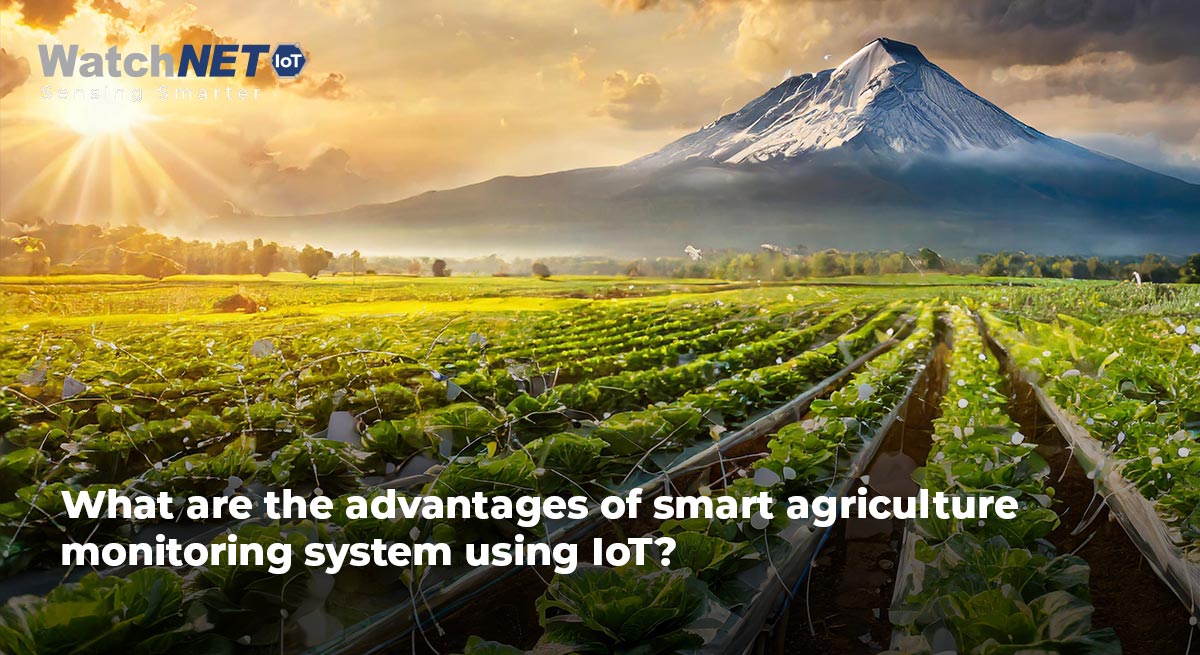Are you a Canadian farmer seeking to boost efficiency, optimize yields, and maximize profits? Look no further than the incredible world of IoT-powered smart agriculture! This blog dives deep into the advantages of these systems, specifically tailored for the unique needs of Canadian agriculture, including greenhouse farming.
What is a Smart Agriculture Monitoring System?
At its core, a smart agriculture monitoring system is a network of intelligent sensors strategically placed across a farm to collect data on various environmental factors. These sensors, such as the WLRC-S14 Soil Moisture Sensor from WatchNET IoT, measure parameters like soil moisture, temperature, humidity, and CO2 levels. The data is then transmitted wirelessly to a central hub or cloud platform, where it’s analyzed to provide valuable insights into crop health and environmental conditions.
Benefits of Smart Agriculture with IoT for Canadian Farms:
Precision Irrigation: Water management is crucial for Canadian farmers, especially in arid regions where water resources are limited. Smart irrigation systems equipped with soil moisture sensors enable precise watering based on real-time data, minimizing water waste and maximizing crop yields.
Enhanced Greenhouse Management: Canadian greenhouse growers face challenges with temperature and humidity control. Environmental monitoring solutions like the WLRC-S35 Wireless Outdoor CO₂/Temperature Humidity Sensor help maintain optimal growing conditions, leading to healthier plants and increased productivity.
Disease and Pest Control: Early detection of crop diseases and pest infestations is essential for minimizing crop damage. Smart agriculture systems can monitor plant health in real-time and alert farmers to potential threats, allowing for proactive pest management strategies and reducing the need for chemical pesticides.
Remote Monitoring and Control: With smart agriculture systems, farmers can remotely monitor their fields and make informed decisions from anywhere with an internet connection. This flexibility is particularly valuable for Canadian farmers with large landholdings, enabling them to optimize operations and respond quickly to changing conditions.
Improved Labor Efficiency: By automating data collection and basic monitoring tasks, smart agriculture systems free up farmers’ time, allowing them to focus on more strategic aspects of their operation, such as crop planning and marketing.
Weather Forecasting and Risk Management: Canadian weather can be unpredictable, but smart agriculture systems with weather monitoring capabilities help farmers anticipate and mitigate weather-related risks, such as frost or excessive rainfall, minimizing crop losses and optimizing resource allocation.
Data-Driven Decision Making: Smart agriculture systems provide a wealth of data that can be analyzed to identify trends, track progress, and make informed decisions. By harnessing this data, farmers can optimize resource allocation, reduce waste, and increase profitability.
Sustainability and Environmental Benefits: Smart agriculture promotes sustainable farming practices by optimizing resource use, reducing chemical inputs, and promoting soil health. This aligns with consumer demand for ethically produced, environmentally friendly food and contributes to a more sustainable future for agriculture in Canada.
Smart Agriculture for Canadian Farmers: Products from WatchNET IoT
WatchNET IoT offers a range of products specifically designed for smart agriculture applications, including wireless sensors, gateways, data loggers, and a cloud-based monitoring platform. These solutions empower Canadian farmers to embrace smart agriculture practices and unlock the full potential of IoT technology in farming.
Unlocking the Potential: Getting Started with Smart Agriculture in Canada
Embarking on the journey of smart agriculture may seem daunting, but it’s easier than you think. Here are a few steps to get started:
- Identify Your Needs: Assess your farm’s specific challenges and areas for improvement.
- Research Solutions: Explore the various smart agriculture systems available, including those offered by WatchNET IoT.
- Start Small: Begin with a pilot project using a few sensors to test the technology and evaluate its benefits firsthand.
- Seek Expert Advice: Connect with agricultural specialists and IoT solution providers like WatchNET IoT for guidance and support on your smart agriculture journey.
By embracing smart agriculture monitoring systems, Canadian farmers can increase efficiency, reduce environmental impact, and ensure a sustainable future for agriculture in Canada. With the right technology and support, the possibilities are endless.

